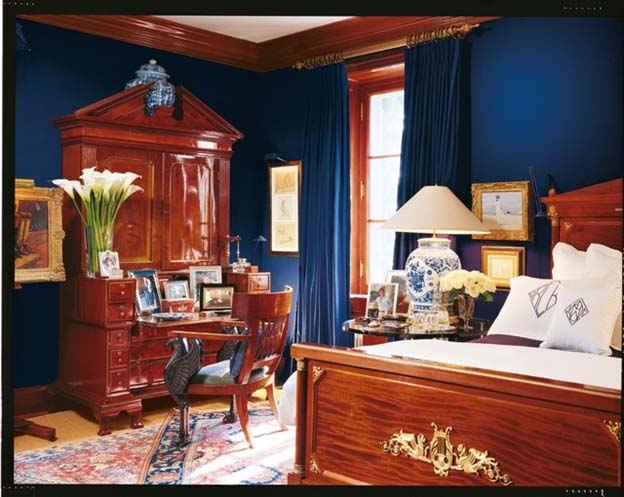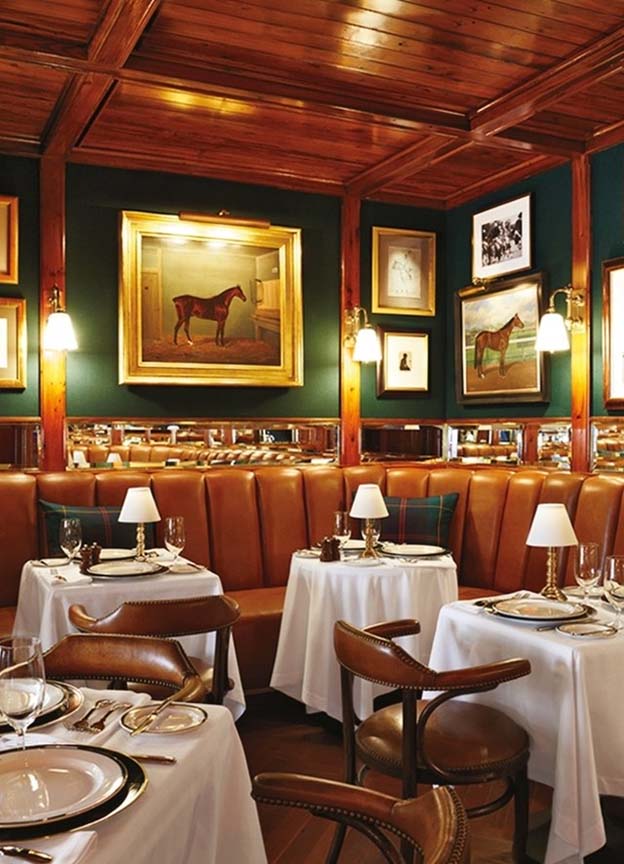There’s a lot more than meets the eye to the color of a dining room’s walls or the pattern on a foyer floor
Have you ever wondered why the lights go down in a restaurant, or why there are no windows in casinos? What may seem like mindless coincidences are actually strategically crafted designs to manipulate your subconscious. These common illusions are used throughout public buildings such as offices, restaurants, and hotels we visit daily. Many of these tricks can even be adapted to into home design. Below are 10 design deceptions that will make you analyze every room you walk into.

Blue is said to promote tranquility when used as a wall color, which is why it is often used in bedrooms to induce sleep. A calming blue is also prominently seen in spas and wellness centers to promote relaxation before and after treatments.
Strategically Placed Mirrors
Mirrored walls aren’t just for fun houses and outdated apartment closet doors. Thoughtfully placed mirrors in a small space can create the illusion of openness, playing with the perspective of the room to create depth.

Black and White Floors
Studies have shown that the juxtaposition of black and white across a large space subconsciously invokes your mind to think the floor is uneven and to move quickly through the area. This tactic is most commonly seen in areas with a lot of foot traffic, such as a lobby, cafeteria, or bathroom.
Wallpaper Used as a Disguise
Everyone has seen at least one movie that includes a hidden corridor behind a bookshelf that is activated at the removal of a specific book. But what if that design wasn’t as far-fetched as it seems? What if similar tactics were used to hide a top-secret government bunker for decades in plain sight? The Greenbrier utilized iconic wallpapered interiors to actually trick guests into not seeing what was right in front of them. Using a false wall and very strategically placed wallpaper, designers were able to create the illusion of a solid wall.
Patterned Carpet
Patterned carpet has long been used in design to lengthen hallways and make small spaces look larger. The pattern draws the eye outward, creating the illusion of more space.
Green Dining Rooms
The color green is known as one of the easiest colors for the human eye to focus on for an extended period of time. Green is also said to be soothing and can evoke the feeling of hunger when used as a wall color, making it the perfect shade for a dining room where meals can be lengthy. Red is often associated with hunger as well but is best used for kitchens and busier dining establishments as it is an energetic color and influences a quick exit.
The Big Chill
It’s not just you—the powers that be are cranking up the A/C, but for good reason. It’s much easier to be lulled to sleep during a long meeting in a warm room than in a chilly one. Bottom line: You’re going to need that winter cardigan on the back of your desk chair all summer long.
Dim the Lights
As a restaurant crosses from lunch into dinner, it is common practice that the maître d' dims the lights. While many may think this is to mimic the time of day, there is another mind-tricking reason for the change. Bright lighting invokes an energetic mindset, which creates turnover during the busier times of day. If you will notice, fast food restaurants have bright lights day and night to encourage a quick visit. Dim lighting is comfortable and invites guests to enjoy a longer stay—or multiple courses and rounds of drinks.
Dollars and Scents
Have you ever walked into a grocery store, smelled fresh bread and felt immediate hunger, but there is no fresh bread to be found? Many retail establishments are now using scent machines placed in unseen corners to mimic the smell of breads, pastries, and even chocolate to trigger hunger, luring customers to purchase more than they originally came in to buy.
Windowless Rooms
Windowless rooms are most commonly used as a tactic to lose track of time, and in the case of a casino, spend more money. Bathing these confined areas in warm lighting tricks the mind into comfort, effortlessly allowing visitors to forget the time. Taking advantage of the windowless tactic, casinos use busy carpeting and ceiling designs to force the eye toward gaming tables and slot machines, driving guests to gamble.



















Your Message